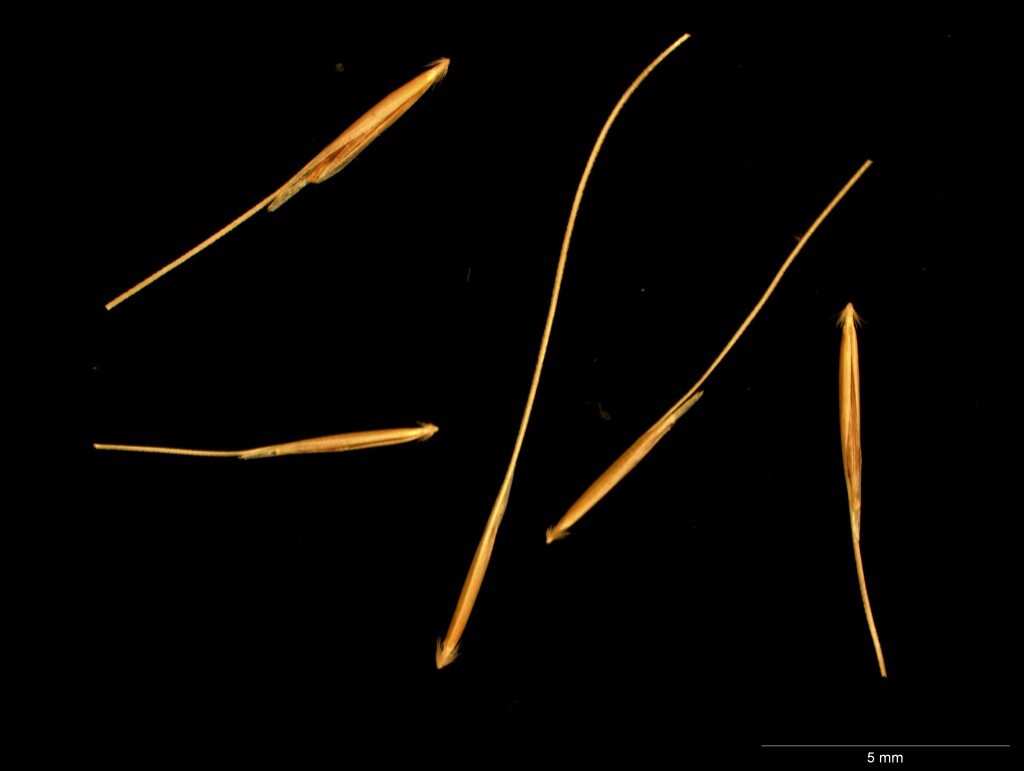Dichelachne crinita
(L.f.) Hook.f. Long-hair Plume-grassCulms erect, to 1 m high, nodes glabrous. Leaves glabrous (rarely the basal sheath pubescent); blade flat or inrolled, to 20 cm long, 2–5 mm wide, often scabrous on the upper surface; ligule papery, obtuse, 1–2 mm long. Inflorescence a cylindric panicle, 6–25 cm long, the spikelets typically overlapping and obscuring the axis and branches; glumes narrow-acuminate, 5–10 mm long, the upper often 1–2 mm longer than lower; lemma 4.5–8 mm long, shorter than glumes or rarely longer than lower glume, smooth; awn 22–40 mm long, sinuous, weakly twisted in lower part. Flowers Oct.–Mar.
LoM, MuM, Wim, GleP, Brid, VVP, VRiv, MuF, GipP, OtP, WaP, Gold, CVU, GGr, DunT, NIS, EGL, EGU, WPro, HSF, HNF, OtR, Strz, MonT, HFE, VAlp. All states except NT. Widespread, occurring on a wide variety of substrates almost throughout the State, particularly common near the coast and on the volcanic plain.
Walsh, N.G. (1994). Poaceae. In: Walsh, N.G.; Entwisle, T.J., Flora of Victoria Vol. 2, Ferns and Allied Plants, Conifers and Monocotyledons, pp. 356–627. Inkata Press, Melbourne.
 Spinning
Spinning




